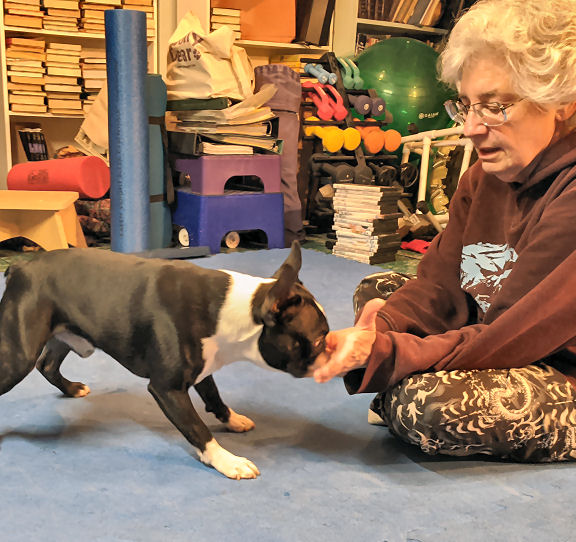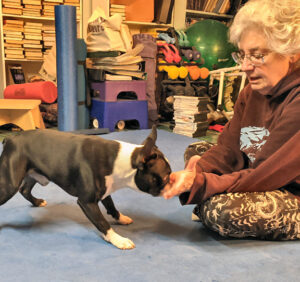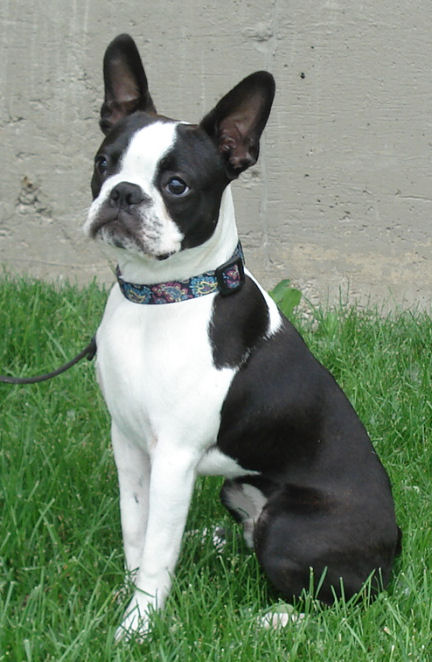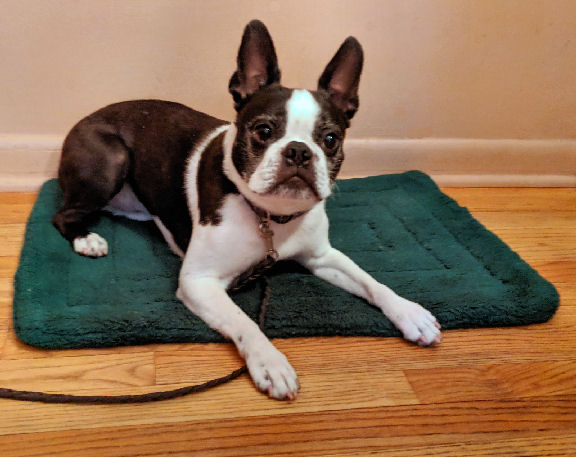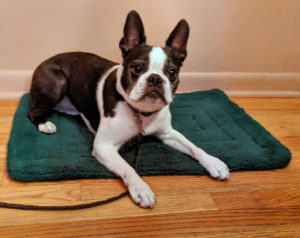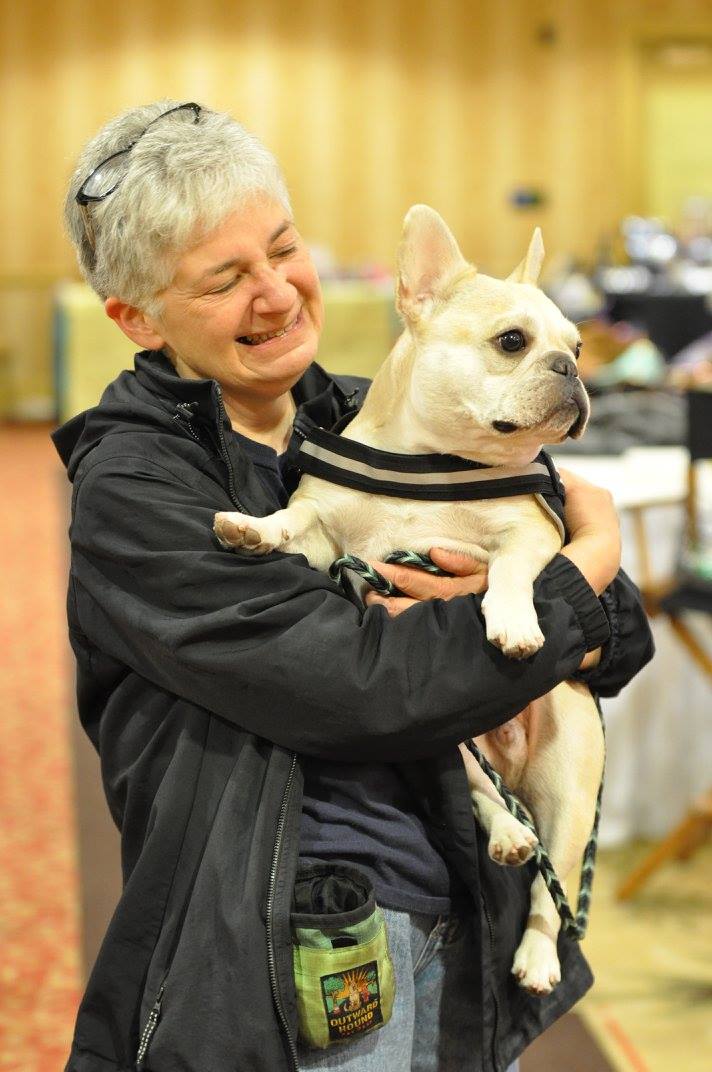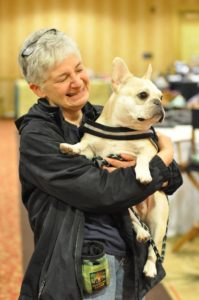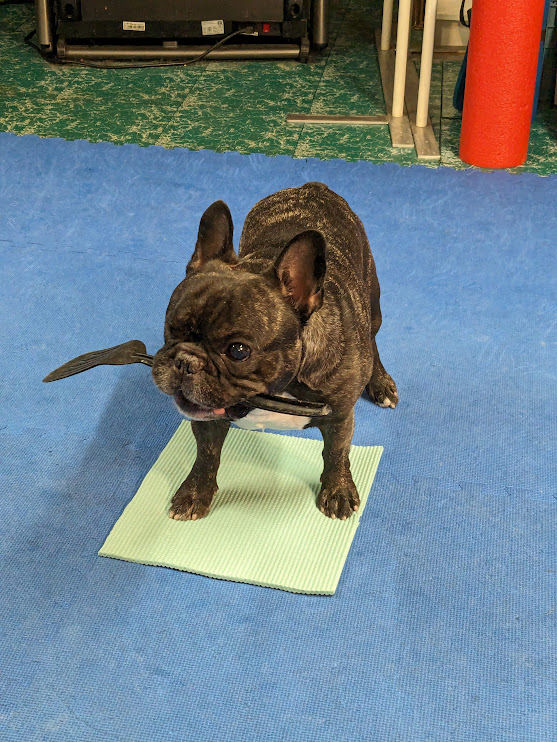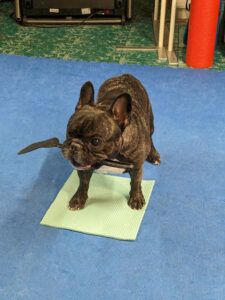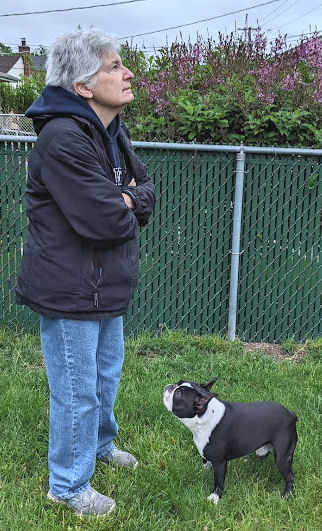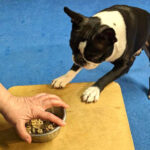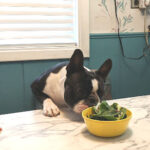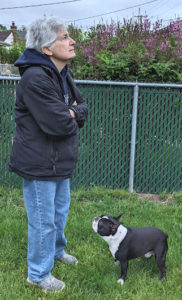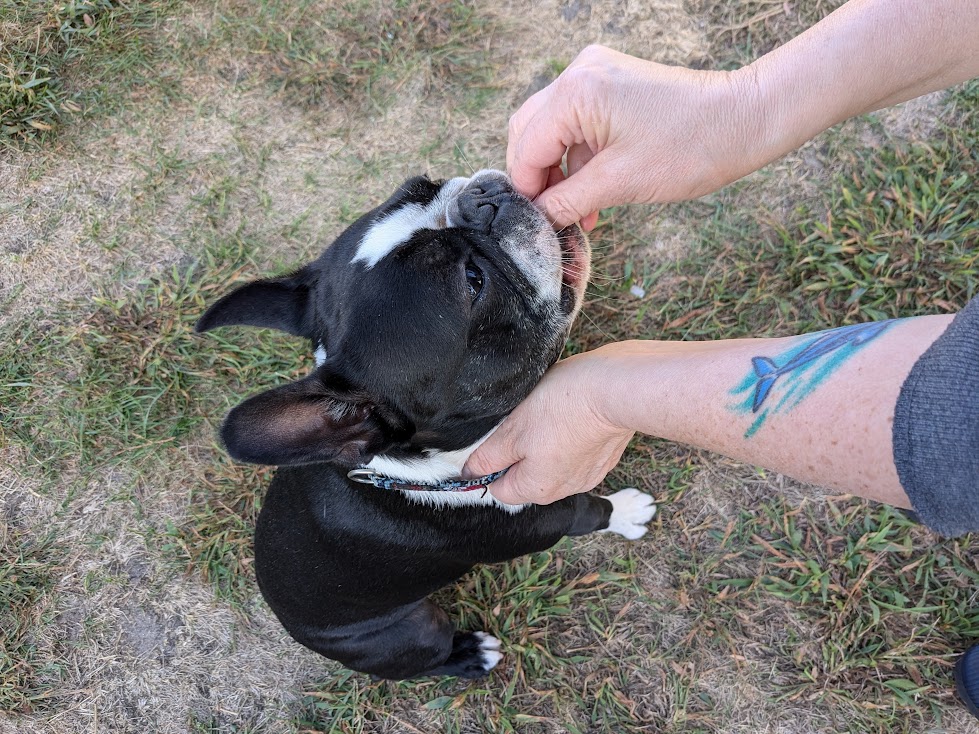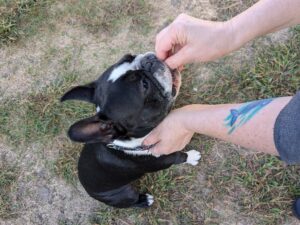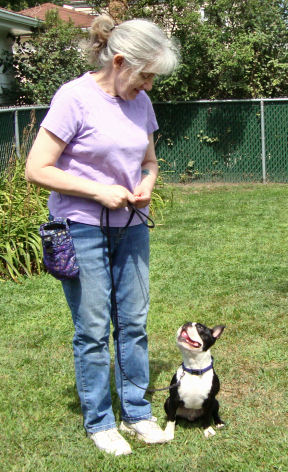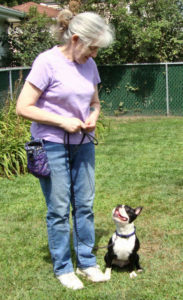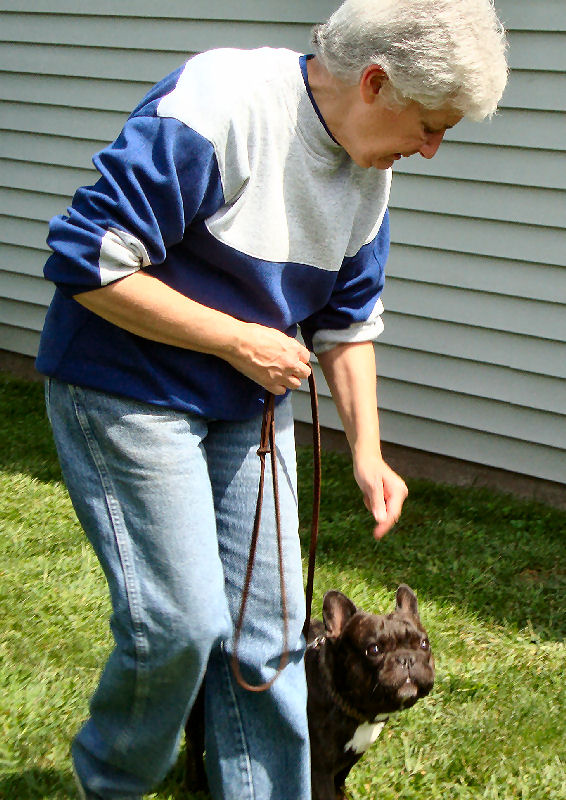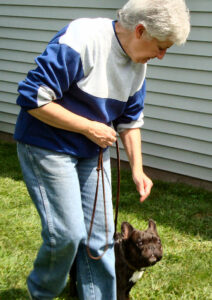“Touch!” is the dog training game we use most often. It’s a fast, fun game. No special equipment, nothing but your hands, some treats, and your dog. The more you play it, the more useful “Touch!” becomes. Make it your dog’s favorite game – you’ll be happy you did.
We’ve seen “Touch!” played a few different ways, with varying results. The version we use really emphasizes the mechanics of the game. It makes a difference when you want to sustain the game longer than a single touch.
It’s one thing to grab your dog’s attention momentarily when there’s a bicycle flying down the walking path next to you. It’s another when you need to keep your dog’s mind occupied while sitting in the veterinarian’s waiting room with a cat in a carrier across the aisle. Our version of “Touch!” is useful in either case.
Timing is everything
Basically, “Touch!” is just holding out your hand and your dog touches it with their nose. Sounds easy, and it is. The tricky part, if there is one, is keeping the dog doing it. It’s the last place you want your dog displaying “one and done” syndrome.
Remember that dogs learn by the timing and placement of rewards. That translates to being very conscious of what you’re doing and how you’re doing it. You don’t have to worry that you’ll break your dog, or ruin the game irretrievably. Getting it “wrong” just means you might confuse your dog and it may take an extra 2-Minute session or two for them to get it. Relax and have fun.
Focus on procedure
To play “Touch!”, hold your hand, palm out, in front of your leg at the level of your dog’s nose. It doesn’t matter which hand, or which leg. You’ll be manipulating the treats with the other hand, so it’s probably smart to offer the palm of your non-dominant hand to your dog.
Hold your palm-out hand right there. Don’t ever move it in this game. Pretend it’s surgically attached to your leg and does not move. Again – the open palm facing your dog does not move during the game. Ever.
In case the emphasis and repetition don’t clue you in, this is the part of the game that almost everyone screws up when they’re learning how to play. That open palm is waggling all over the place, bopping into the dog’s face, curling around a treat, shifting to keep it in the dog’s sight. Again – the open hand that your dog needs to touch Does Not Move.
When your dog interacts with the palm in any way (looks at it, sniffs it, licks it, touches it with their nose), use the other hand to bring a treat to the palm and give it to your dog. You can say “Good Touch!” if the dog did it. Otherwise, just stay quiet. Do Not Move The Open Hand. Just leave it there. Wait for your dog. Be patient.
Note: if your dog paws at your hand, don’t reward it. We’re being specific that the dog’s nose has to “Touch!” If this game looks a little like “Gimme Your Paw” to your dog, that’s understandable. When you play “Gimme Your Paw,” use a cupped hand, rather than a flat, open palm so your dog will understand the difference. You can start, like Hope did with Simon, seated cross-legged on the floor and your arm resting on your knee
Sustaining the “Touch!” behavior
As long as your open hand remains in place, your dog should keep touching it. Reward every single touch. Because the rate of reward is high for this game, dogs tend to learn it quickly and love playing it. Don’t be stingy with the treats. We want this game to have high interest and value for your dog so you can rely on their response when you need it.
There really isn’t any next step. You put your palm out, your dog touches it, deliver a reward with the other hand, using the open palm as a target for the treat. Give the dog the treat – don’t drop it in your open palm (which would require moving that hand, which you shouldn’t do). You deliver it to the dog near the open palm. It can look and feel a little awkward, but it’s the way to explain the game to the dog. Remember dogs learn by the timing and placement of rewards. This is the placement part. It matters.
Play often, wherever
Because this is a go-to game in all kinds of stressful situations, be sure to play it often. Play it in every room, outside, in the car, at the pet store – wherever you and your dog go together. To keep your dog’s interest and love of the game at the highest level, don’t even try to slack off on the rewards. If every single “Touch!” gets rewarded, your dog will, reliably, “Touch!” when you ask them to.
If you keep the “Touch!” game valuable to your dog, they’ll respond when you need them to. Like when you let them out in the yard late at night for last walks and see the skunk ambling across. If your dog dashes over to “Touch!” you may not have to make a midnight run to the store for tomato juice.

